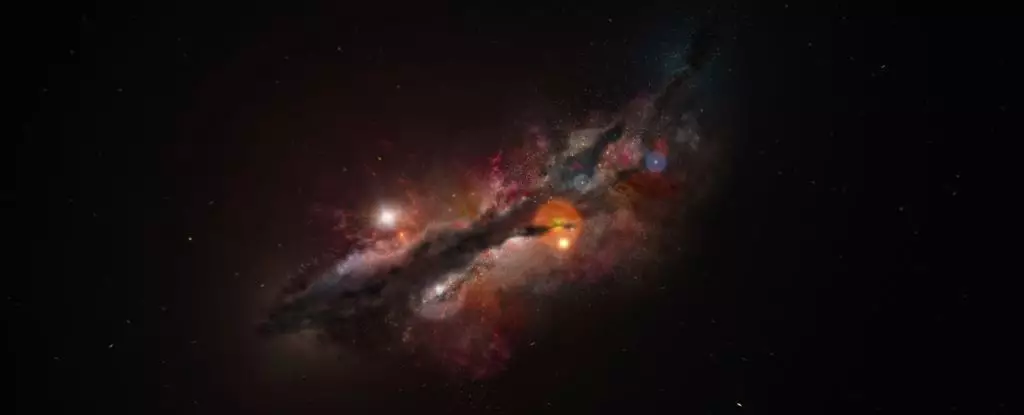In a monumental breakthrough for astrophysics, astronomers have observed JADES-GS-z14-0, a galaxy that dates back to merely 300 million years after the Big Bang. This discovery, made possible through advanced technology like the James Webb Space Telescope (JWST), reveals that this ancient galaxy hosts an unexpected bounty of oxygen. Such a finding challenges long-held beliefs about the early universe and suggests that cosmic evolution may have unfolded at a far more rapid pace than previously believed.
Many scientists had posited that — after the initial formation during the Big Bang — stars needed time to evolve and produce heavier elements through nuclear fusion processes. JADES-GS-z14-0, however, provides a climatic contradiction; this galaxy’s oxygen levels are ten times higher than cosmologists had anticipated. Essentially, researchers are witnessing what can only be described as a precocious adolescent in a cosmic realm filled with newborns.
Rapid Evolution of Cosmic Structures
The implications of JADES-GS-z14-0’s discovery extend beyond mere oxygen levels; it signifies a much more rapid development of galaxies than current cosmological models allow for. According to Sander Schouws, a cosmologist at Leiden Observatory, these newer findings position this ancient galaxy as a swiftly maturing entity in a universe presumed to be in its infancy. The traditional timeline suggested that galaxies required substantial periods for development; however, JADES-GS-z14-0 raises questions about the processes that made its rapid growth possible.
An essential component to understanding this mystery lies in the life cycles of stars and the supernova events that scatter heavier elements like oxygen throughout the universe. The existence of JADES-GS-z14-0 indirectly suggests that star formation and violent deaths (supernovae) were occurring at an astonishing rate shortly after the universe’s inception. This rapid sequence, either implied or otherwise, forces us to reconsider established notions regarding galactic emergence.
Unprecedented Observations with Advanced Technology
The cutting-edge Atacama Large Millimeter/submillimeter Array (ALMA) in Chile has played a pivotal role in these observations. By detecting redshifted infrared light emitted from this galaxy, scientists have been able to evaluate its composition more accurately than ever before. The capacity of the JWST allows astronomers to peel back layers of time and scrutinize phenomena that had remained obscured from us for centuries.
The implications of this technology are staggering—astronomers are now re-examining the timeline of the universe itself. With this enhanced capability, JADES-GS-z14-0 is only one instance of several large galaxies found far earlier than expected. The benchmark of 1 billion years post-Big Bang has quickly shifted, inviting a reconsideration of existing cosmological theories. Observations such as these are forcing scientists to adapt or even overhaul their timelines regarding batch galactic formation.
What Lies Ahead for Cosmological Understanding?
With every new finding related to JADES-GS-z14-0, it becomes increasingly evident that stars and galaxies formed and matured in an intricately interwoven tapestry of cosmic events. This revelation has prompted discussions within the scientific community about how such rapid evolution could shape our understanding of the broader cosmos. “The existence of mature galaxies in the infant Universe raises critical questions about when and how galaxies formed,” says Stefano Carniani, an astrophysicist from the Scuola Normale Superiore in Italy.
Because our understanding of the universe is still an evolving field, it’s crucial to remain open to new data that challenges prior models. The discovery of JADES-GS-z14-0 serves as a startling reminder that the universe often operates contrary to our expectations. It underscores the necessity for a more dynamic and flexible approach to cosmological studies as opposed to rigid adherence to past paradigms.
As these revelations come to light, it creates an empowering landscape for future research. New questions arise with every discovery: What lay beyond JADES-GS-z14-0? How did such galaxies interact with their cosmic environment? What does their existence imply about the ultimate fate of our universe? In the vastness of space and time, each answer unfolds a myriad of new mysteries, paving the way for humanity’s continuous quest for knowledge about the cosmos.


Leave a Reply